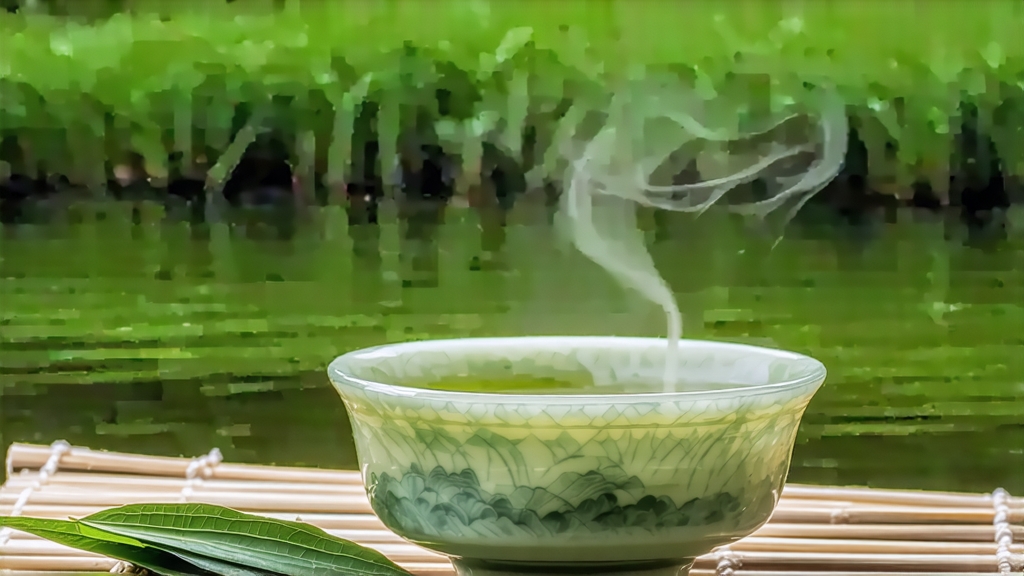
Longjing, literally “Dragon-Well,” is the most celebrated among China’s more than one thousand green-tea styles. To the Chinese palate it is the benchmark against which all other greens are judged; to the international drinker it is often the first Chinese tea whose name is remembered after the very first sip. Its fame rests not on marketing alone but on seven centuries of documented history, a micro-climate that refuses to be replicated elsewhere, and a craft so precise that a five-second misjudgment in the wok can turn a batch of priceless spring buds into mere vegetable matter.
History: From Imperial Tribute to Global Icon
The earliest written record appears in the “Tea Notes” of Song-dynasty scholar-official Su Shi, who in 1089 CE praised the water of Dragon-Well spring and the tea picked around it. By the Ming dynasty the leaves were already pressed into imperial tribute, carried 1 200 km north to Beijing in bamboo-lined chests packed with ice. The Qianlong Emperor’s 1751 visit to Hangzhou sealed the legend: inspecting the fields incognito, he pocketed a handful of fresh shoots; returning to his palace he found the leaves so fragrant that he decreed the eighteen bushes he had plucked from be cordoned off forever. Those bushes still stand inside the Lion Peak (Shi Feng) enclosure, their spring harvest auctioned annually for more than the price of gold per gram. In 1949 Longjing was served to Mao Zedong’s first foreign delegation; in 1972 Premier Zhou Enlai poured it for Richard Nixon, making the tea a quiet actor in Cold-War diplomacy. Today it tops China’s official list of “Ten Famous Teas,” and its name has been granted Geographic Indication status by both Chinese law and EU regulation, a level of protection shared by only a handful of agricultural products worldwide.
Terroir: Why West Lake Matters
Hangzhou’s West Lake is a drowned river valley oriented east-west, allowing morning mist to linger until noon while afternoon sun is tempered by the water body. The shale-derived soil is slightly acidic, rich in quartz and manganese; drainage is so rapid that roots are forced to dive deep for moisture, concentrating amino acids—especially L-theanine—in the buds. Within the 168 km² protected zone, the micro-locations are ranked by connoisseurs: Lion Peak, Clouds Dwelling, Tiger-Running, Mei Family Dock, and Dragon-Well Village itself. Lion Peak, facing southeast and shielded by ancient camphor trees, yields the sweetest, most umami-laden leaves; Tiger-Running, fed by a mineral spring, produces a greener liquor with a faint almond note. Move the same Qingxin cultivar 30 km north and the identical craft produces a flat, astringent tea lacking the signature bean-like sweetness—proof that Longjing is more place than technique.
Cultivars: Beyond the Generic “Longjing”
Most consumers meet only the generic “West Lake Longjing,” yet serious drinkers distinguish three primary cultivars. Longjing #43, a 1960s clonal selection, buds ten days earlier than seed-grown trees, yielding a bright jade appearance and brisk, spinach-like flavor. Old-group Qunti, the seed-propagated “community strain,” sprouts later, carrying more polyphenols and a deeper, nuttier aftertaste. A rare third cultivar, Longye (Dragon-leaf), survives only inside the protected enclosures; its tiny, orchid-shaped buds give a liquor so creamy it can fool tasters into thinking milk was added. Each cultivar demands minute adjustments in wok temperature and hand pressure; master crafters mark the differences by listening: #43 crackles like dry pine needles, Qunti hisses like damp silk, Longye whispers almost nothing.
Craft: The Eight-Minute Ballet in a 200 °C Wok
Although machine copying exists, top-grade Longjing is still shaped by hand in cast-iron woks seasoned for decades. The process, nationally listed as intangible cultural heritage, unfolds in ten steps within eight minutes. Withered leaves, picked at dawn and carried in bamboo baskets lined with banana leaf, are first “cast” into the wok at 200 °C to kill green enzymes in exactly 90 seconds; the crafter’s bare hand flips the leaves against the searing metal, relying on callus built since childhood. Temperature is then dropped to 80 °C for the “理条” (li-tiao) stage—ten fingers